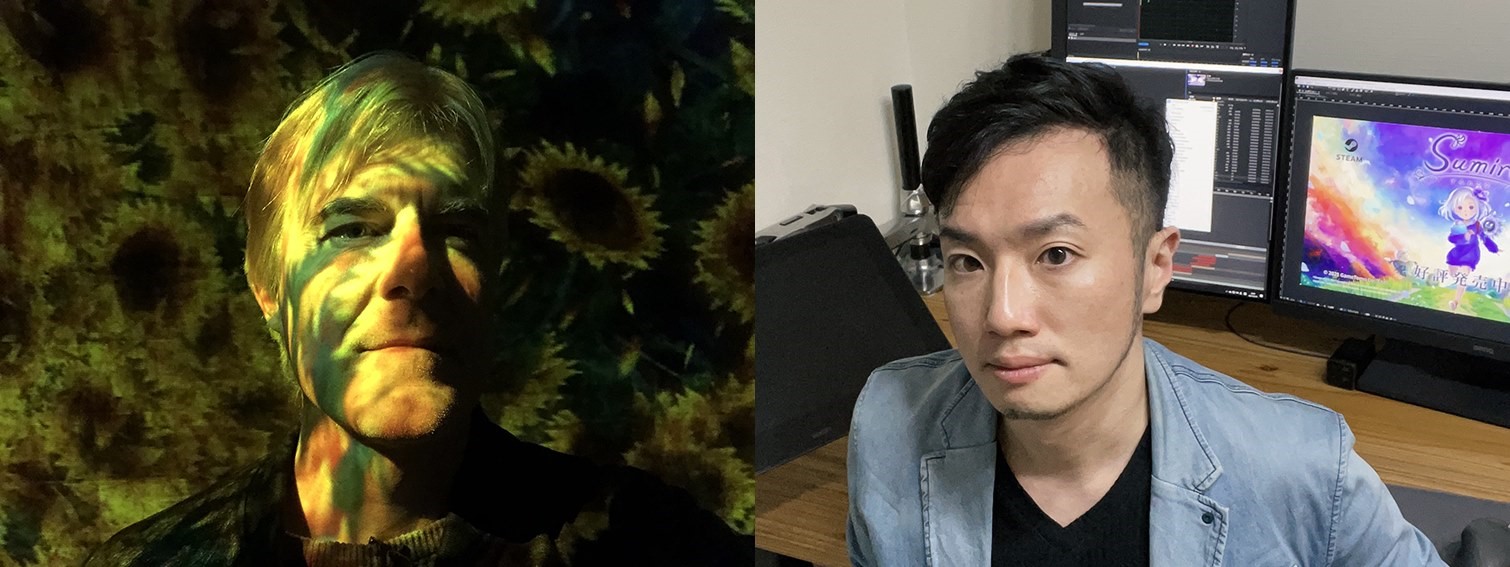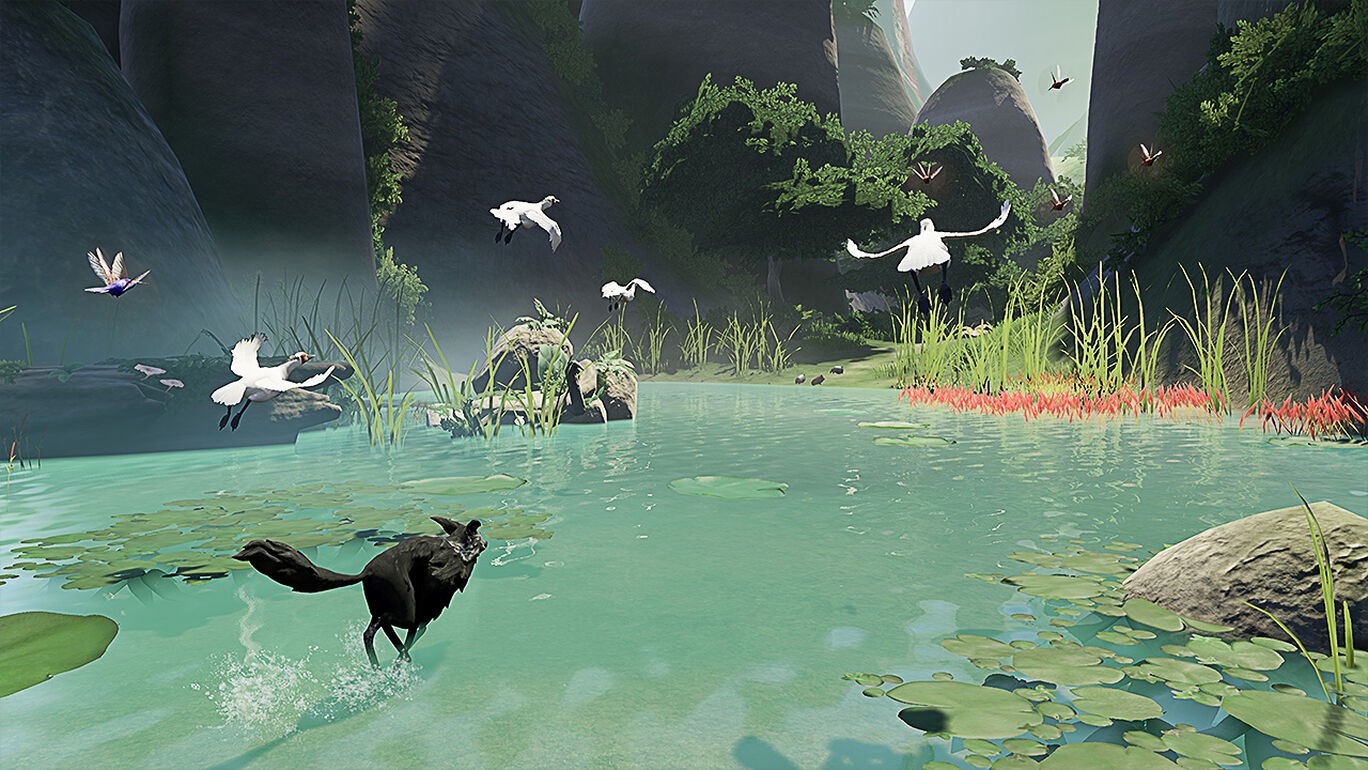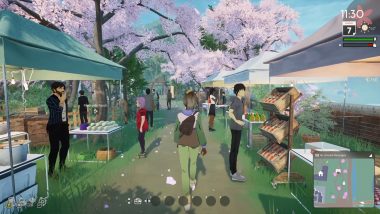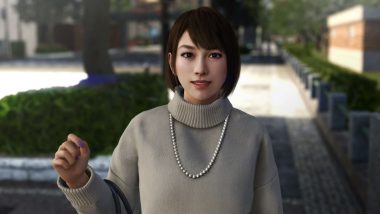Sumire developer interview: Game inspired by time spent in Kobe, Japan

Publication date of the original Japanese article: 2021-05-28 16:00 (JST)
Translated by. Jacob Ritter
Sumire, developed by GameTomo, released on PC (Steam) and Nintendo Switch on May 27. Sumire follows the adventure of the title character, named Sumire, over the course of one extraordinary day. Along with her flower spirit sidekick, Sumire explores shrines, hot springs, and a myriad of locales inspired by lovely nature landscapes of Japan. Depending on which characters you interact with along the way within the limits of Sumire’s one-day adventure, her story will unfold in various ways.
GameTomo, comprised of staff who localized Cuphead into Japanese and produced Project Nimbus, created this entirely new project of Sumire, featuring distinct motifs and visuals influenced by Japanese culture and landscapes. This focus has garnered attention for the game, earing its place in Indie World and other showcases.
We conducted an email interview with the GameTomo development team to discuss Sumire’s unique appeal, as well as the challenge of publishing this as their very first in-house title.

A game that depicts “living each day to the fullest.”
───To begin, please tell us what inspired you to create Sumire.
Within this ever-changing world and life, do you ever feel that time passes by without you, leaving you imprisoned by regret of what you failed to accomplish? Director Michael (Michael Ely) cultivated that feeling of time and regret–something all of us have felt at one point in our lives–into the theme of “living each day to the fullest,” from upon which Sumire was created.
Even for GameTomo itself, finally achieving its long-held goal of developing and publishing a game in-house perhaps ties into this theme of “living each day to the fullest.” Additionally, many of the staff at GameTomo, including Michael and the producer Keita (Keita Shibuya), come from a videogame development background, providing them with a level of skill and know-how to drive the production of Sumire forward.

───Are there any Japanese locales in particular that inspired the setting?
Michael was inspired by his experiences traveling through the mountains of the Kobe region. He found himself encapsulated by shrines, hot springs, and other forms of natural beauty that are distinct to Japan’s terrain and culture. The restaurant “Jonny’s” that appears in-game may or may not be a reimagining of a certain real-world eatery…
───Given that Sumire is built upon this theme of a “one-day” journey, how does the concept of time influence the gameplay?
The player controls Sumire on her one-day adventure from the early morning until sunset. As you proceed through the story events, the sky’s color will change as time ticks onwards–and there is no turning back. What you choose to do and what choices you make will impact your future path, and there are certain things only available to you at specific times in the game.
However, the game itself does not run on a real-time clock. Rather, the player’s actions trigger the progression of time and different story beats. This way, the player can choose to proceed at their own pace, unlocking more of the story as they resolve the in-game quests.

The sky reflects the heart of the characters in this circular world that embodies the passage of time.
───Could you please talk to us about Sumire’s graphics? Each pixel on the screen pops with gorgeous vibrancy. What factors did you focus on in creating this imagery?
Much of our attention went to the sky itself. In a game conceived as taking place over a limited amount of time, having the sky function as a natural element to portray this passage of time to the player was of the utmost importance. Not only does the changing sky depict time’s passage, but it is also a reflection of the characters’ emotions.
Having the game take place in a cyclical world, as opposed to a flat plane, is another distinction in Sumire. The land is connected to form one large circular loop, as if Sumire was traveling from right to left around the face of a clock itself. This concept both aligns with the game’s theme around the passage of time, but also complements the story of Sumire who is fighting against the inevitable flow of time and fleeting past. Our general idea was to have this be a mirror to how the hand of a clock travels from left to right, and to how the sun rises in the west and sets in the east.
───Hearing that, clearly there is profound meaning behind the design choice to have the edges of the map curve and for Sumire to walk from right to left. What was most difficult about depicting this world’s circular nature?
While we do find our concept of a circular world to be a fascinating one, creating all the environments, characters, effects, and animations to align with the curved backgrounds was quite the difficult task. Our artists needed to go through rigorous trial and error to ensure the designs functioned well in-game, and effects such as wind and gravity wouldn’t work the same way for us here, versus how you would expect them to in the real world.
This concept could not have been realized without the collaboration of our artists and programmers. Programmer Jon (Jonathan Ross) developed tools and mechanisms that allowed for our signature curved level design, as well as for smooth character movement on top of it. And I must say that we feel utterly satisfied with the final product.

───It sounds like an array of complex tools and techniques were required to display this circular world clearly and without error. After playing the demo version, I noticed that these curved environments persisted not only when moving left and right, but also when moving up and down along a path.
Another defining trait of our game is the fusion of hand-drawn illustrations and the depth of the 3D environments in a 2.5D world. We wanted to make the most of the warm, richly painted illustrations and atmosphere while giving the player the experience of freely roaming around this world. The 2D background images in Sumire are layered to give a pop-up artbook effect as well.
However, implementing the artwork this way made it challenging to optimize the graphical processing. But on the other hand, the 3D rendering permitted us to include other lavish design elements such as fog and depth of field. We want players to experience this game as if they were enjoying a picture book with the images lively popping up at each turn of the page.
Music composed by Japanese acoustic band TOW
───How did you come to know TOW, the band who composed the music for Sumire?
Long before the world was shaken by the COVID-19 pandemic, Michael attended one of TOW’s live performances in Tokyo. He was incredibly moved by the show, thinking, “I’d love to have TOW create music for one of our games someday…” And once we began working on Sumire, it felt that no artist other than TOW could create music to suit the game’s world view, and we took the leap to reach out. Fortunately for us, TOW also had a deep appreciation for games, and happily agreed to join us on board.
───TOW really knows how to incorporate Japanese flair into their music. It appears that TOW also uploads live gameplay videos to their YouTube channel, so it’s clear they truly love games themselves.
As I mentioned before, the two members of TOW have a deep appreciation for gaming. So not only did they compose the soundtrack, but they also gave us feedback on the game itself and grew increasingly committed to our project. It’s thanks to them that we were able to improve upon even more aspects of the game.
───What type of people do you hope will play Sumire?
I hope that players who enjoy narrative-driven games, and people who live with the hope in their hearts that a brighter tomorrow awaits them will play Sumire.

About GameTomo
───We’d also like to hear more about GameTomo. How many people work in your development team?
Our core development team has seven members. Although, we often outsource assistance from outside our company as well.
───You have a lot of foreign team members as well, don’t you? What is the ratio of Japanese staff to those from overseas?
It’s actually about 50/50! We truly value the different backgrounds and experiences of our team members, and the unique ideas and viewpoints we otherwise might not be exposed to.
───What is the main language used in the workplace?
While we mostly communicate in English, you’ll still hear conversations that jump back and forth between both English and Japanese!
───What size was the development team for Sumire specifically? About how long was the production period for this game?
Sumire’s development spanned over about two years. In the beginning, we only had two team members devoted to the game. But as the development took shape, other members at GameTomo joined and became an integral part of the team.
───What lead to the decision to release Sumire on PC and Nintendo Switch?
For indie games, PC is the frontline platform that is an absolute must for release. Additionally, we observed a positive response on the Nintendo Switch for the Japanese localization of Cuphead, as well as the release of Lost Ember, which showed us that the Nintendo Switch is a great platform for story-driven games and those with hand-drawn graphics.

Another reason we decided to release the game on the Nintendo Switch is that Sumire runs on the Unity engine, which made our job optimizing the game easier. From the middle stages of development, we began verifying the PC and Nintendo Switch versions simultaneously and were honestly surprised with how smoothly things ran from the get-go. The entire team was impressed.
However, as we proceeded further, we encountered several bottlenecks, and it took a great deal of time to optimize graphical load times and memory usage. Thanks to our programmers, though, we were able to get everything in order. I am deeply grateful for how powerful the Unity engine and Nintendo Switch system are.
───As you mentioned, GameTomo has localized other projects, such as Cuphead. What portion of your work falls under development versus localization? Are there other areas GameTomo works on as well?
The ratio of our workload varies based on what’s needed. GameTomo provides extensive support for indie game developers from around the world, whether its technical support, publishing, or Japanese to English localization. Each development studio will have its own specific needs, and we are able to be flexible to help meet those needs.
───In closing, could you tell us what GameTomo is working on recently?
We are currently providing technical support and publishing a Thai-developed mecha action game called Nimbus INFINITY(ニンバス・インフィニティ). Now that Sumire is released, we are also looking into increasing support for other languages in a future update.
We also have some projects in the works that we can’t mention to the public just yet, so be on the lookout for future announcements!
───Thank you for your time.
It’s been two weeks since the GameTomo staff transitioned to telework. How has working from home been going for all of you out there? This is what our team members’ desks look like–they all have their own style!
That’s the end of our email interview with GameTomo, the developers behind Sumire. Sumire is out now on PC (Steam) and Nintendo Switch.




